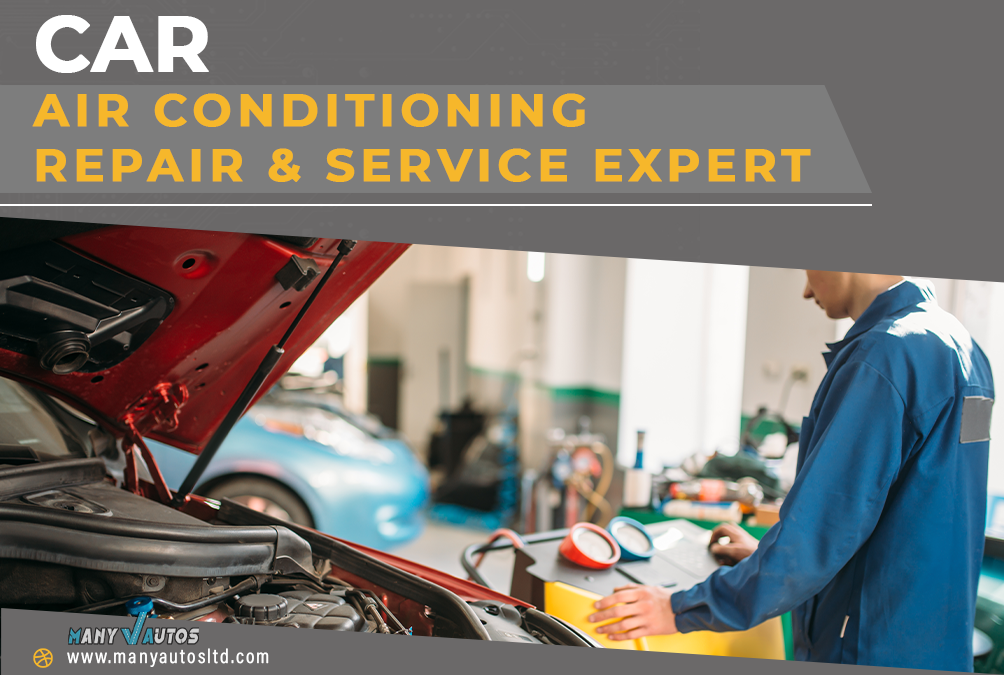
How to Avoid Heating and Air Conditioning Issues in Your Car
If you have a newer vehicle, you should not have any problems with the heater or air conditioner until the vehicle has accumulated 60,000 miles or more. The greater the risk of a problem, the older the car and the more miles you put on it.
That is why it is critical to be well-versed in your vehicle. Don't just drive your car and ignore the little details that set it apart. Instead, pay attention to the sounds it makes, how your car handles, and anything new that comes up while you're driving. Don't ignore warning signs; instead, take action right away.
Maintaining your car's heating and air conditioning system properly is the best way to ensure it works properly for the life of your vehicle. This includes having your car inspected on a regular basis to ensure that everything is in working order. If you have a trusted mechanic on your side, you'll know your car will be there for you, running properly no matter how many miles you have to drive.
How to Clean Your Car's Air Conditioning System
Summer is finally here. The oppressive heat should serve as a reminder to vehicle owners to inspect the condition of their vehicle's air conditioning (AC) system. After all, you wouldn't want to drive a long distance with a broken air conditioner or a smelly cabin.
Before you rush to book a car service and possibly spend out some of your hard-earned cash, you might want to try and do it yourself. Here's how to clean your car's air conditioner on your own:
1. Clean the vents
This isn't as easy as it sounds. It is difficult to reach the inner parts of the vents where dirt accumulates due to the small slit. Experts recommend using a foam paintbrush because of its elastic properties, and the relatively thin yet sturdy brush handle allows users to insert it further to clean hard-to-reach areas. Please bear in mind that using this will force dirt through the ducts and into the AC filter. This is fine for now because you'll be cleaning it later.
2. Clean the cabin filter
Cleaning the cabin filter can be difficult because it varies from vehicle to vehicle. It is, however, usually found behind the glove compartment. To begin, remove everything from the glove compartment. Before you can get to the cabin filter, you'll need to find all of the pegs that connect the glove compartment to the dashboard and carefully disconnect them. It is recommended that car owners replace the air filter every 12,000 to 15,000 miles, or at the very least once a year when performing a full car service near me. If the budget does not allow for the purchase of a new cabin air filter, it can be removed and cleaned with an air compressor to remove dust. After that, spray it with a car disinfectant before reassembling it.
3. Brush/wipe the fans
This is the tricky part. Check to see if your car's engine has been turned off for an extended period of time. Open the hood and look for the air conditioning condenser fan, which is usually just behind the condenser (perpendicular to the bumper). If the fan blades are easily accessible, simply wipe them down. It would be preferable if you could get it out of the engine compartment. Just make sure you remember how to put everything back together.
4. Spray the condenser
Another difficult task is cleaning your car's condenser, which is the mesh-like part just behind the grille/front bumper. Yes, some vehicles may necessitate the removal of the bumper itself in order to gain access to it. The good news is that once you have access to it, you can simply spray it with water and air-dry it to remove the dirt. Make certain that no other wires in the engine bay become wet, as this could cause a short circuit. You should notice an improvement in the performance of your car's air conditioning system after all of this cleaning. To avoid any inconvenience, read your car's manual and conduct some research before dismantling anything. If in doubt, look for car service near me online and leave the job to the trained mechanics.
The Worth of Your Car's Heating and Air Conditioning System
Heating and cooling in your vehicle are most likely so automatic that you don't give them much thought. You press a button or pull a lever, and your car is conditioned exactly how you want it, whether it's hot or cold outside.
When your vehicle's heating and air conditioning system fails, you'll realise how critical it is. A hot summer day in the UK can have you scrambling out of your car as quickly as possible, and if you can't get the heat to turn on, you might not be able to leave the house at all. A problem with your heating and cooling system can exacerbate ice and moisture build-up on your windows.